Harlem Globetrotters: Slam-dunk superstars
The Harlem Globetrotters are an American basketball team that combines physical talent, entertainment, and comedy in their games.
The largely Black professional U.S. basketball team plays games throughout the world and brings in huge groups of people to see the players’ amazing ball-handling skills and funny tricks.
Today, the Globetrotters remain as popular as ever and have become basketball ambassadors, bringing their showmanship to millions of people throughout the world.
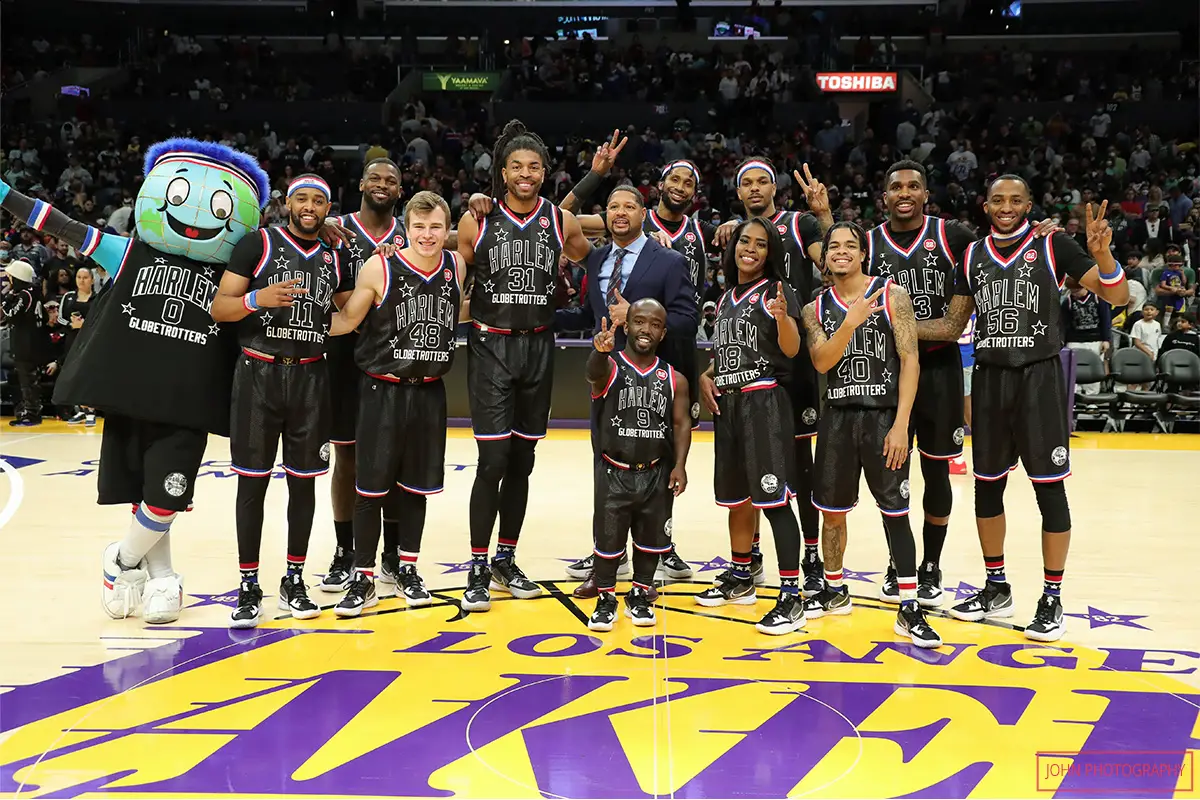
They’re the world’s most famous sports exhibition team.
Inaugurated almost a century ago, they have become a byword for superlative skills, jaw-dropping showmanship, and sparkling entertainment.
And a resounding riposte to prejudice.
Before long, they came to the attention of fledgling impresario Abe Saperstein who began working first as their promoter, then manager.
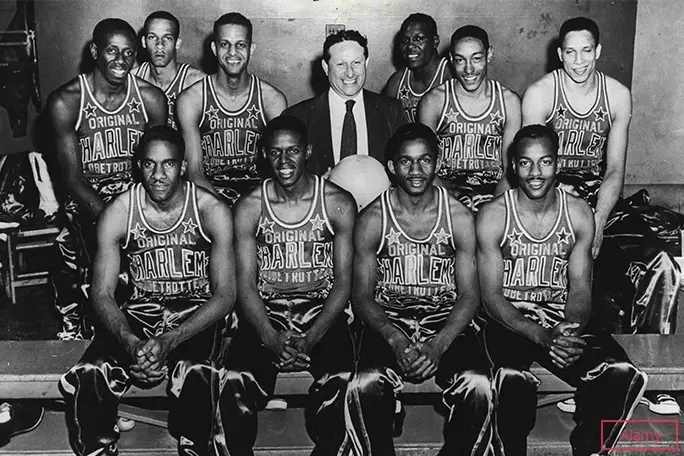
They were originally known as the Harlem New York Globe Trotters.
The moniker gave them a big-city cosmopolitan cachet, flagged up their African-American identity, and created the fiction that they were already seasoned travellers with tours under their belt.
They went out as a “barnstorming” team, sports squads who played exhibition matches across the country, often at short notice, setting up wherever there were teams to play and paying crowds.
Barnstorming offered Black players the opportunity to show off their skills and, more practically, earn money. They were banned from playing in a professional basketball league.
The Globetrotters toured the Mid-West, where many citizens had never seen a Black face before, and were a resounding triumph from the get-go, winning 100 out of the initial 105 games they played.
They weren’t just scoring points, they were making them too.
Until the mid-20th century, the US sports world was as segregated as any area of American society; and although baseball had its own “negro” leagues, there was no pro equivalent for Black basketball teams.
The sport was forced to sit up and take notice, and in 1950 the NBA finally became racially integrated. Nathaniel “Sweetwater” Clifton quit the Globetrotters for the New York Knicks, becoming the first Black player to appear in the NBA.
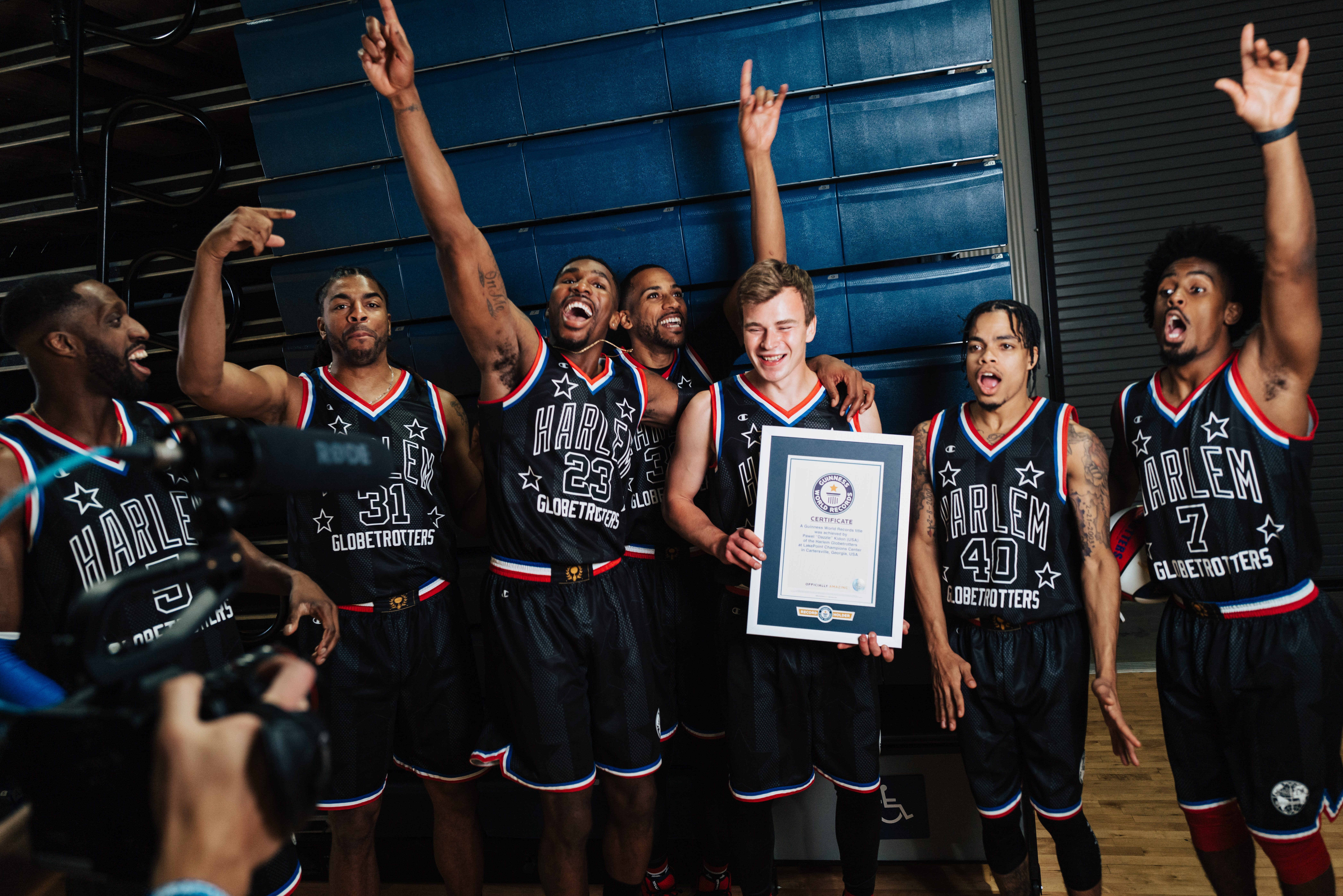
They weren’t alone, of course. In 1947, the Brooklyn Dodgers signed Jackie Robinson, who became the first Black player to appear in Major League Baseball (MLB).
Two years later, he became the first African-American to receive the National League’s Most Valuable Player award.
Legendary Black pitcher “Satchel Paige” got the better of many white MLB batters in exhibition games, then – relatively late in his career – was admitted to the MLB, where he became a sensation.
And an enduring one: he pitched for the Kansas City Athletics aged 59 years 80 days on 25 Sep 1965, making him the oldest baseball player.
Barnstorming basketball teams began going out of fashion in the 1940s, at which point Saperstein suggested adding slapstick and humour to the Globetrotters’ performances, elements that would become as integral to the team’s identity as their outrageous skills.
Tatum’s comedy routines helped transform the team’s profile.
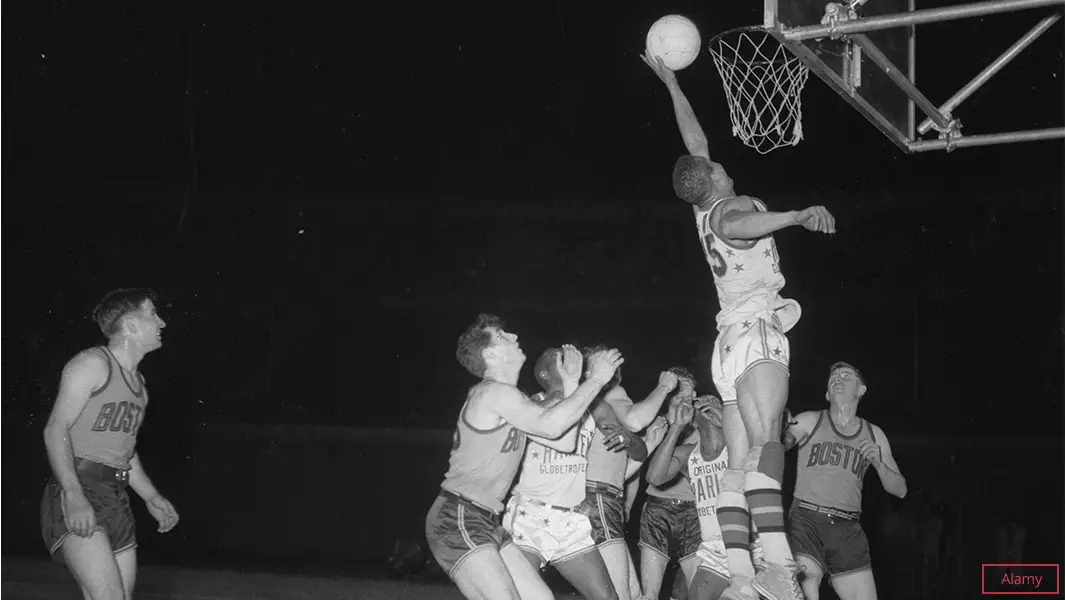
On 22 August 1951, the Harlem Globetrotters played before 75,000 spectators at the Olympic Stadium in Berlin. It was the largest attendance for a basketball game up to that point, an achievement that saw them featured in the very first Guinness Book of Records, published four years later.
Accompanying them on that trip was honorary Globetrotter Jesse Owens, the Black US track and field star who still holds the record for the most athletics world records set on one day – six – achieved in just 45 minutes at Ann Arbor, Michigan, USA, on 24 May 1935.
In 1951–52, the Globetrotters won a staggering 333 games, losing only eight. They played to a total of 3 million spectators on an international tour that covered 75,000 miles (120,700 km). They have been criss-crossing the globe for decades, visiting 101 countries altogether and becoming the most travelled basketball team by a comfortable margin. The year 1952 also saw them adopt their signature tune, a whistled version of “Sweet Georgia Brown” by Brother Bones and His Shadows.
For their 1958/59 season (which included a sold-out tour of the Soviet Union), the Globetrotters counted Wilt Chamberlain among their number. In an extraordinary career, this 215.8-cm-tall (7-ft 1-in) basketball icon achieved multiple GWR titles, many of which – including the most points by an individual in an NBA game (100) and season (4,029) – still stand more than half a century later.
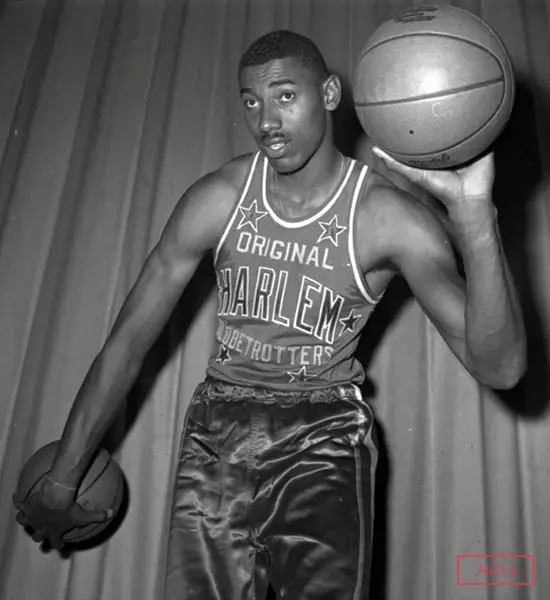
“Wilt the Stilt” began his NBA career with the Philadelphia Warriors on 24 Oct 1959, but so enjoyed his stint with the Globetrotters that he played with them again whenever his NBA commitments would allow.
On 12 Sep 1970, CBS’s Harlem Globetrotters cartoon series kicked off, going on to become a hugely popular staple of Saturday morning TV and enjoying multiple repeats.
A live-action show – The Harlem Globetrotters Popcorn Machine – followed.
“Goose” Tatum’s mantle as “Clown Prince” of basketball was picked up by Meadowlark Lemon, who played 16,000 games with the Harlem Globetrotters from the mid-50s until his departure in 1980.
Like Tatum, Meadowlark combined joyous showmanship and split-second comedic timing with jaw-dropping ball skills.
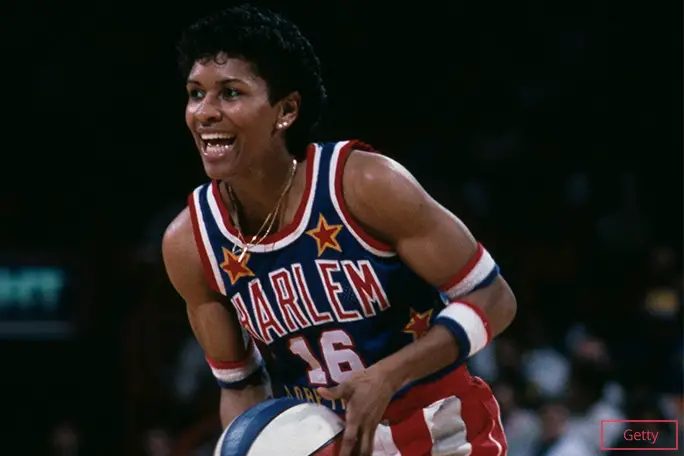
In 1985, Lynette Woodard became the first woman to play with the Harlem Globetrotters giving a healthy boost to the WNBA’s profile.
Captain of the US women’s team that won Olympic gold in 1984, Woodward was inducted into the Naismith Memorial Basketball Hall of Fame in 2004.
The team was back in the record books on 1 April 2000.
Michael “Wild Thing” Wilson (USA) performed the highest slam dunk, through a net set at 3.65 m (12 ft), a record that remains unbeaten to this day. And it’s not just skyscraping six-footers who make the grade.
The shortest Harlem Globetrotters member – Jahmani "Hot Shot" Swanson (USA) – is just 4 ft 5 in (134 cm) tall.
Born with achondroplasia, Swanson played his first game (wearing shirt No.9) on 26 Dec 2017. His younger brother, Justin “X-Over”, who also has the condition, is also a Globetrotter.
The Swanson brothers are the only two Harlem-born players currently in the team, which is based in Atlanta, Georgia, USA.
The seemingly effortless élan with which these inspirational players pull off jaw-dropping shots and tricks is the result of hard work and relentless practice.
“It is not what you do in front of people,” Globetrotter Rock “Wham” Middleton told GWR. “It is what you do when no one is looking.”
Today, the Harlem Globetrotters play more than 400 live shows every year, although that’s split between several iterations of the team.
And along the way, they’ve steadily added to their GWR titles, with spectacular trick shots a speciality.
Their most recent achievements include the farthest bounce shot – 28.56 m (93 ft 8.4 in), by Corey “Thunder” Law – the most blindfolded basketball slam dunks in one minute – nine, by Julian “Zeus” McClurkin – and the farthest windmill basketball shot – 14.10 m (46 ft 3 in), by Donte “Hammer” Harrison (all USA).
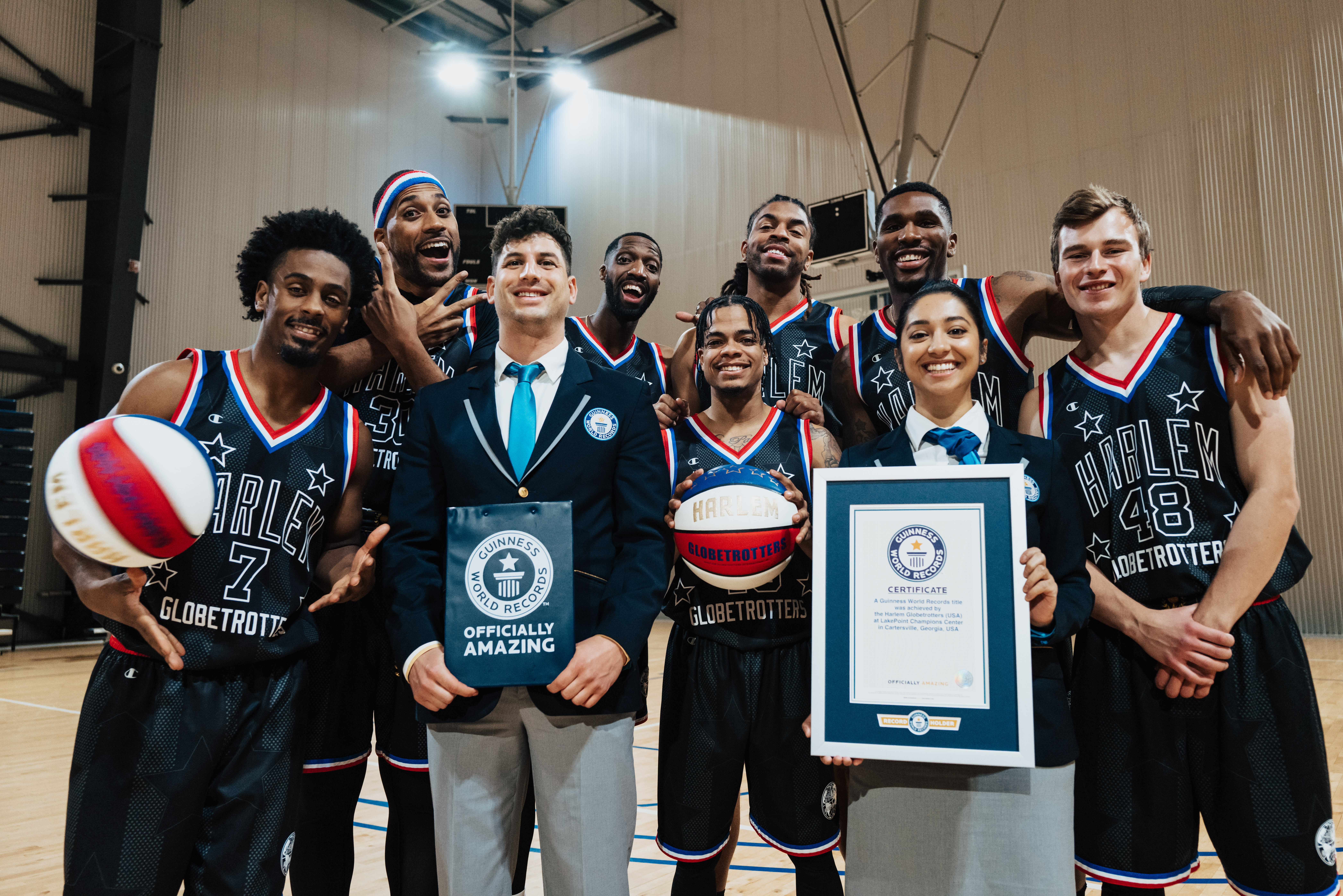
All three were set during a whirlwind 48 hr of record breaking in December 2021, when the team racked up 18 new world records.
“I remember being a kid and always opening up the Guinness World Records books and [I] thought, that was something, that was like unattainable,” “Hammer” Harrison told us in 2021.
“But to be here with the Globetrotters and break a couple of records myself, it is an honour to be inside that book!”
